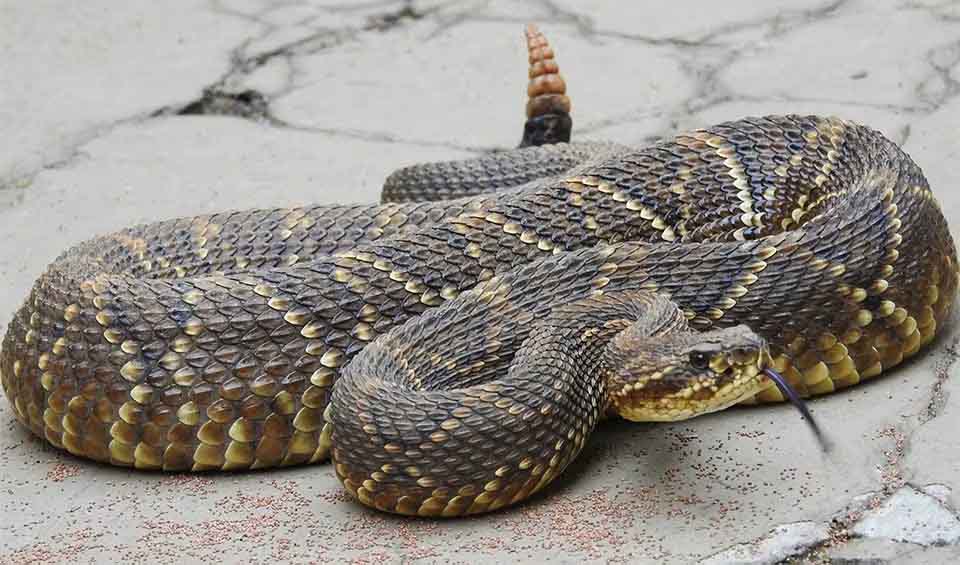One of the most widely recognized and feared snakes in South America. This rattlesnake is known for its distinctive rattle, potent venom, and wide distribution across many countries in South America, including Brazil, Argentina, and Paraguay. As a member of the pit viper family, it has several unique characteristics that make it both fascinating and formidable.
One of the most recognizable features of the South American rattlesnake is its rattle. Located at the tip of its tail, the rattle is made up of a series of hollow, interlocking segments that create a buzzing sound when the snake vibrates its tail. This sound serves as a warning to potential threats, letting them know that the snake is nearby and ready to defend itself if necessary. The rattle is an effective way for the snake to avoid confrontation, as most animals and humans will steer clear once they hear it.
One of the South American rattlesnake’s most interesting features is its heat-sensing pits between its eyes and nostrils. These pits allow the snake to detect the body heat of warm-blooded animals, even in the dark. This ability makes the rattlesnake an effective nocturnal hunter, as it can locate prey like rodents, birds, and small mammals even when visibility is low.
The venom of the South American rattlesnake is highly toxic and can be deadly if not treated promptly. The venom contains both neurotoxins, which affect the nervous system, and hemotoxins, which destroy blood cells and tissues. This combination makes the venom particularly dangerous, causing symptoms like muscle paralysis, difficulty breathing, and severe pain. Despite its deadly venom, the South American rattlesnake is not aggressive and will usually only bite if it feels threatened or cornered. The rattle serves as a warning, giving potential threats a chance to back away before the snake feels the need to strike.
Distribution
 Argentina
Argentina Bolivia
Bolivia Brazil
Brazil Colombia
Colombia French Guiana
French Guiana Guyana
Guyana Paraguay
Paraguay Peru
Peru Suriname
Suriname Uruguay
Uruguay Venezuela
VenezuelaAnything we've missed?
Help us improve this page by suggesting edits. Glory never dies!
Suggest an editGet to know me
Terrestrial / Aquatic
Altricial / Precocial
Polygamous / Monogamous
Dimorphic (size) / Monomorphic
Active: Diurnal / Nocturnal
Social behavior: Solitary / Pack / Herd
Diet: Carnivore / Herbivore / Omnivore / Piscivorous / Insectivore
Migratory: Yes / No
Domesticated: Yes / No
Dangerous: Yes / No




